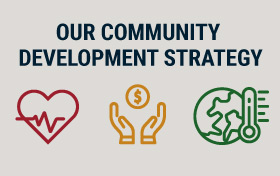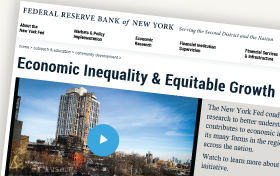-
About the
New York FedAt the New York Fed, our mission is to make the U.S. economy stronger and the financial system more stable for all segments of society. We do this by executing monetary policy, providing financial services, supervising banks and conducting research and providing expertise on issues that impact the nation and communities we serve.
-
Markets & Policy Implementation
Markets & Policy Implementation
-
Economic
Research -
Financial Institution Supervision
0 posts on "Great Recession"About the BlogLiberty Street Economics features insight and analysis from New York Fed economists working at the intersection of research and policy. Launched in 2011, the blog takes its name from the Bank’s headquarters at 33 Liberty Street in Manhattan’s Financial District.
The editors are Michael Fleming, Andrew Haughwout, Thomas Klitgaard, and Asani Sarkar, all economists in the Bank’s Research Group.
Liberty Street Economics does not publish new posts during the blackout periods surrounding Federal Open Market Committee meetings.
The views expressed are those of the authors, and do not necessarily reflect the position of the New York Fed or the Federal Reserve System.
Economic Research TrackerEconomic Inequality

This ongoing Liberty Street Economics series analyzes disparities in economic and policy outcomes by race, gender, age, region, income, and other factors.View by TopicBalance of PaymentsBank CapitalBanksCentral BankClimate ChangeCorporate FinanceCOVID-19 FacilitiesCreditCrisisCryptocurrenciesDemographicsDSGEEconomic HistoryEducationEmploymentEquitable GrowthEuro AreaExchange RatesExpectationsExportsFederal ReserveFed FundsFinancial InstitutionsFinancial IntermediationFinancial MarketsFiscal PolicyForecastingHey, Economist!Historical EchoesHousehold FinanceHousingHuman CapitalInequalityInflationInternational EconomicsLabor MarketLender of Last ResortLiquidityMacroeconomicsMonetary PolicyNew JerseyNew YorkNonbank (NBFI)PandemicPanicPuerto RicoRecessionRegional AnalysisRegulationRepoStocksStudent LoansSupply ChainSystemic RiskTariffsTreasuryUnemploymentMost Read this Year
Useful LinksComment GuidelinesWe encourage your comments and queries on our posts and will publish them (below the post) subject to the following guidelines:
Please be brief: Comments are limited to 1,500 characters.
Please be aware: Comments submitted shortly before or during the FOMC blackout may not be published until after the blackout.
Please be relevant: Comments are moderated and will not appear until they have been reviewed to ensure that they are substantive and clearly related to the topic of the post.
Please be respectful: We reserve the right not to post any comment, and will not post comments that are abusive, harassing, obscene, or commercial in nature. No notice will be given regarding whether a submission will or will
not be posted.Comments with links: Please do not include any links in your comment, even if you feel the links will contribute to the discussion. Comments with links will not be posted.
Disclosure PolicyThe LSE editors ask authors submitting a post to the blog to confirm that they have no conflicts of interest as defined by the American Economic Association in its Disclosure Policy. If an author has sources of financial support or other interests that could be perceived as influencing the research presented in the post, we disclose that fact in a statement prepared by the author and appended to the author information at the end of the post. If the author has no such interests to disclose, no statement is provided. Note, however, that we do indicate in all cases if a data vendor or other party has a right to review a post.














 RSS Feed
RSS Feed Follow Liberty Street Economics
Follow Liberty Street Economics